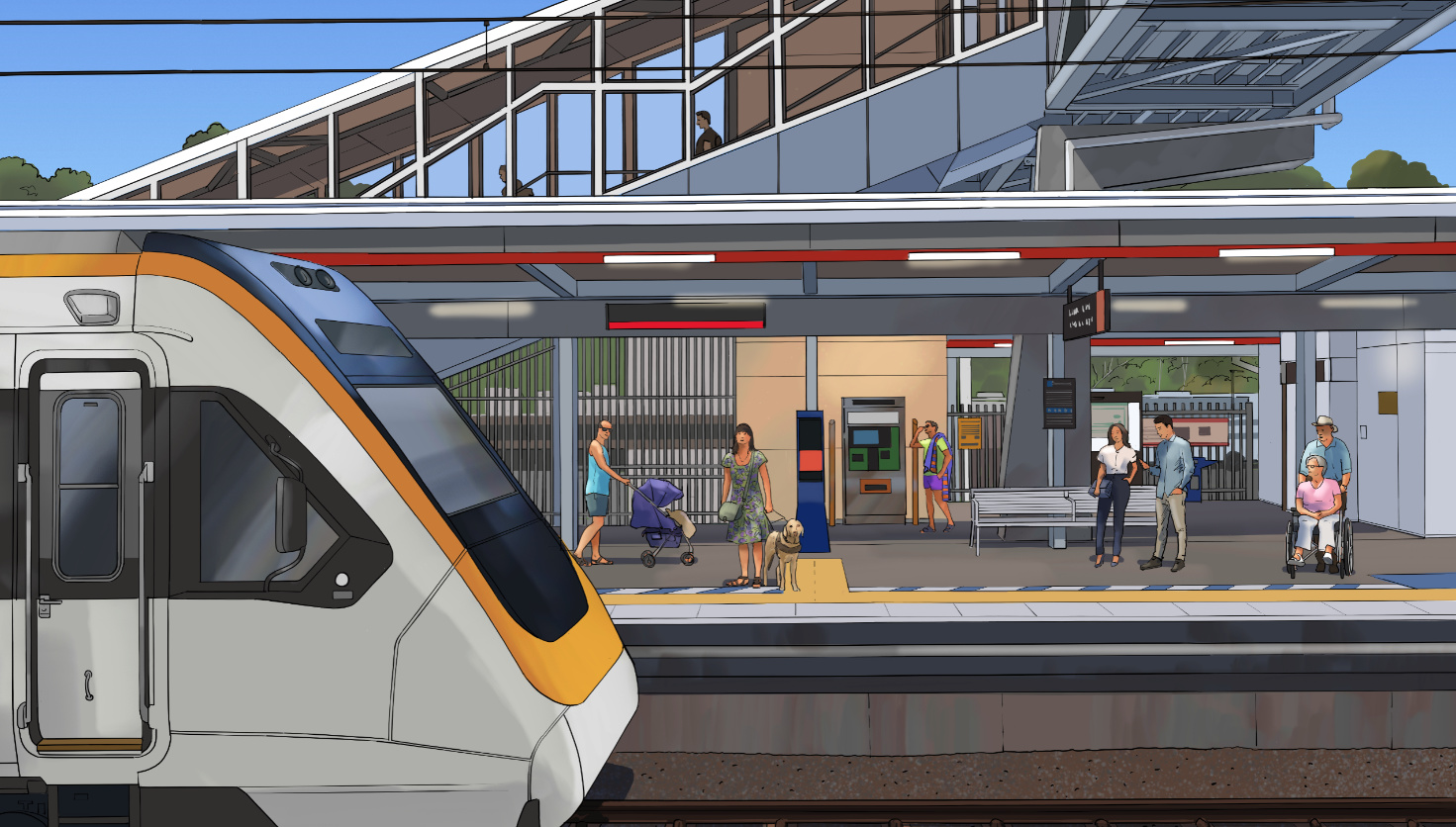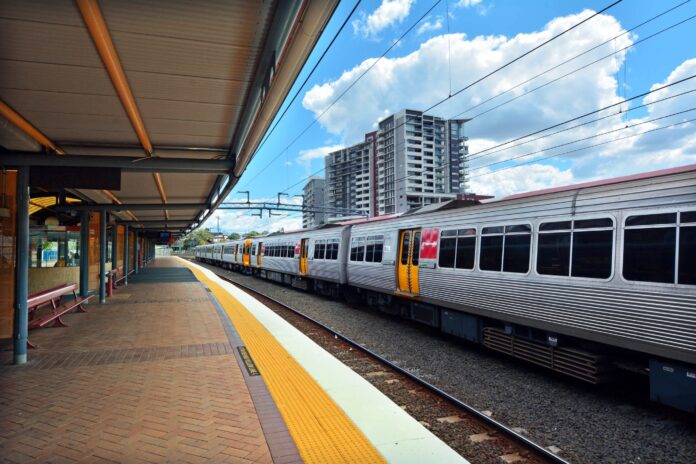A business case summary for a Sunshine Coast passenger rail line has revealed just how much the entire project could cost and outlines some of the issues associated with it.
The state government this week released a 28-page overview of the Direct Sunshine Coast Rail Line: a proposed 37.8km dual-track line with multiple stations between Beerwah and Maroochydore that would ease congestion in the rapidly growing region.
But there is a funding shortfall and the track won’t be completed in time for the 2032 Olympics and Paralympics.
The summary said it would cost $5.4 billion to build the track from Beerwah to Caloundra, $8.4 billion to Birtinya and $12 billion to Maroochydore, with construction to start in 2026.
The state government has pledged $2.75 billion towards Stage 1 of the project, from Beerwah to Caloundra (19km), while the federal government has $1.6 billion on the table.
Do you have an opinion to share? Submit a Letter to the Editor at Sunshine Coast News via news@sunshinecoastnews.com.au. You must include your name and suburb.
The state government is committed to the delivery of the line from Beerwah to Caloundra, the planning of the line to Birtinya, and the protection of the alignment to Maroochydore, by 2032.
The report stated that there were preliminary hopes to build the track, essentially in one go, all the way to Maroochydore “as soon as possible”.
But recommendations followed to build to Birtinya in the first instance.
Those recommendations were then revised, to only build to Caloundra initially.

The Minister for Transport and Main Roads Bart Mellish explained why only part of the proposal will be delivered by 2032.
“The business case recommends that the project be built in stages for multiple reasons, including cost to taxpayers, workforce and skills capacity in Queensland and construction impacts,” he said.
“As the business case reveals, building between Caloundra and Birtinya is very complex for engineers as it will include building a tunnel (at Little Mountain) and a number of bridge structures.”
The business case summary also stated that the stretch between Birtinya and Maroochydore posed multiple challenges.
“Construction of the corridor carries the highest construction risks due to the presence of significant utilities (power, water and sewer), crossing of the Mooloolah River, construction adjacent to the Mooloolah River National Park and landfill at Mountain Creek and interaction with the Sunshine Motorway,” it said.
The summary also detailed how important the passenger rail service would be.
It said the line would cut 45 minutes off travel time between Brisbane and the Sunshine Coast and it would ensure more efficient travel within the region, which is expected to be accommodate 600,000 residents by 2045.
Modelling showed that traffic congestion will “worsen significantly without the DCS, with average speeds across the Sunshine Coast reducing to 51km/h by 2046″.
It said high-quality public transport would unlock more sustainable development and affordable housing, improve regional productivity, improve travel safety, move the region closer to net-zero, improve social equity and have health benefits.

Premier Stephen Miles hailed the DSCRL project last week.
“A direct rail connection to the Sunshine Coast will unlock thousands of homes in the growing Sunshine Coast region and accelerate the release of new, affordable developments,” he said.
Meanwhile, Mr Mellish said the state government’s $2.5 billion pledge for Stage 1 was “the single biggest investment ever made into public transport on the Sunshine Coast”.
He urged the federal Labor government to allocate more funds towards the line.
“The only way that this project can be delivered in full is with the backing of the federal government,” he said.
Opposition leader David Crisafulli criticised the state government for their handling of the project.
He said Caloundra would be congested because it would have the only train station along the region’s coastline.
He also said the Sunshine Coast would be gridlocked without a rail line to Birtinya or Maroochydore within the next eight years.
“We will not stand by and watch Caloundra become a car park while the rest of the Sunny Coast gets short-changed,” he said.
Mr Crisafulli said the LNP was committed to building a heavy rail line “in its entirety … all the way through to Maroochydore”.
The deputy leader of the Opposition and MP for Kawana Jarrod Bleijie called for more action from the Queensland Government.
“We are calling on the state government to commit to this rail project in full, before the 2032 Games,” he said.

Federal Member for Fisher Andrew Wallace, of the LNP, said the project was a “budget blow-out” by the state government.
“They have dropped the ball big time,” he said.
“Delays drive up prices.
“Now, they’re knocking on the door of federal Labor asking for another $1.1 billion just to build the line to Caloundra, not even halfway.
“State Labor wants to give us a third of the rail for twice the price.”
A TMR spokesperson said the state government’s $2.75 billion funding commitment and the business case summary “shows the Queensland Government’s commitment to improving travel around and to the Sunshine Coast”.
“The business case summary shows DSC will offer many benefits to locals and visitors alike and trips to and from the Sunshine Coast will become significantly faster than trips in a private vehicle (in peak hours) and more reliable,” they said.
“The new rail line would also be complemented by an enhanced bus network on the Sunshine Coast, making it easy for people to connect to rail services from their neighbourhoods, or from rail to key destinations like hospitals, university and the airport, without needing a car. This leads to more people on public transport, which means less cars on our roads helping to ease congestion.
“The Queensland Government is committed to a multi-modal approach to relieve pressures on the Sunshine Coast, with planning and design underway on other projects such as the Caloundra Road, Kawana Way Link Road and Bells Creek Arterial Road intersection, Kawana Motorway River Interchange and Sunshine Coast Public Transport project.
“The DSC project will not introduce any level crossings which would normally impact on the local network. All road and rail interfaces will be grade separated.”

A spokesperson for the Department of Infrastructure, Transport, Regional Development, Communications and the Arts said the federal government would consider the business case before making any further announcement on funding.
“The Australian Government retained $1.6 billion for the Direct Sunshine Coast Rail Line project following the Infrastructure Investment Program review,” they said.
“The Queensland Government has now submitted the business case for this project to Infrastructure Australia (IA).
“The project will now be subject to proper assessment from IA and advice to the Commonwealth as part of our budget process.”
Meanwhile, spokesperson for rail advocacy group RAIL Back on Track, Jeff Addison, said he was “disappointed” the entire line would not be built by 2032.
He said costing and timing estimates had blown out and the line needed to be built to Maroochydore “as soon as possible”.
“Reaching Caloundra is a half-baked approach as there is no funding for future stages,” he said.
“It is also reliant upon the federal government to come to Queensland’s rescue with an extra $1.1 billion in funding.
“(And) the current transport gap, after this (Stage 1) is built, if it ever gets started, is a gaping hole from Caloundra to Maroochydore.”
He said a proposed public transport system involving bus rapid transit was also yet to be funded, “leaving an 8km gap between transport modes from Birtinya (where there are plans for Olympic venues) to Caloundra”.
“It will result in a world farce public transport for the Olympic and Paralympic Games venues and athlete’s village in 2032,” he said.
“That said, we still need this critical infrastructure in spite of the Games.
“The Games are just an extra imperative to get what we have needed for the past two decades.”
Mr Addison said the $12 billion costing estimate for DCS was “truly astronomical” and he called for an independent assessment of the modelling used to determine the costs.
“I compared the costings of the Redcliffe Peninsula rail line, that opened in 2016, with this project and the differences are astounding, even taking into account inflation over the past eight years,” he said.
Local journalists supporting local people. Help keep independent and fair Sunshine Coast news coming by subscribing to our FREE daily news feed. All it requires is your name and email at the bottom of this article.





